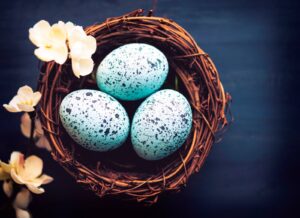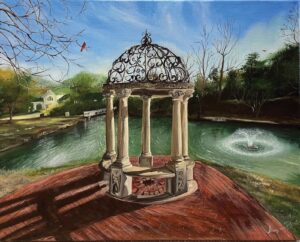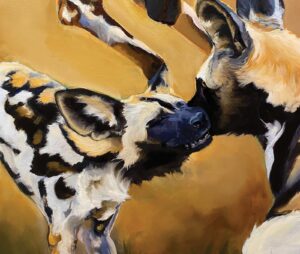Artist Luiza Somodi is living proof that through determination, perseverance, and hard work, one can accomplish a dream — even if it takes decades to do so.
She still vividly recalls fleeing, with her family, on foot, the Nazi invasion in her native Russia. After years, first in Asia, where she contracted malaria, and then in various West German camps, they finally found their way to New York City, literally penniless. From an early age, Luiza showed great interest and talent as an artist. As soon as she was financially able to do so, she studied fine arts at the Famous Artists School of Westport, Connecticut. After graduating and several years of intense painting, she was ecstatic to land a solo art show featuring her oil paintings at the Bruce Museum in Greenwich, Connecticut. However, sadly, she quickly realized that her art could not support her and her children.
“I had to put my passion on hold,” Luiza explains. She studied piano diligently with a master and then, for the next 35 years, she taught private piano lessons. She instilled in her students the importance of dedication and continual practice, and many became excellent pianists and won numerous competitions under her guidance.
Luiza never gave up on her dream of painting. When she finally returned to the easel, she did so with gusto and great inspiration. “When I retired we moved to Aiken and for eight years, I’ve been painting day and night,” she says with enthusiasm. “When I first looked at a blank canvas I was terrified. It was like starting all over again. I felt like I had forgotten everything I had been taught. Once I started painting again, I kept improving, yet I’m continuing to learn all the time; I’m a perpetual student.”
Luiza’s paintings can be described as realistic-impressionistic in style. “I want my work to look real, but I don’t want it to look like a camera either,” she emphasizes. She creates most of her works with a combination of palette knife, brush strokes, and in some cases, blending with her fingers. “Early on I did some watercolor, but it’s really like a stain. I love oil because I can build up texture,” she says. Vibrant color and light effects are key to her landscapes, many of which are inspired by local scenes. Luiza relays the story of one of her favorite subjects, the Maid Marion tree, a famed white oak that she calls “one of Aiken’s original residents.” Unfortunately, it had become diseased and, despite valiant efforts to save the tree, it was obvious that its days were numbered. Luiza and other members of the Aiken Artist Guild gathered one morning to paint the historic tree, but it began to rain shortly after they arrived. The group decided to postpone their en plein air experience until the following week. Luiza decided to stay, and she took many photos of Maid Marion in the dreary weather. “Two days later, she fell in a storm,” Luiza says sadly. Knowing how dearly the locals loved this tree, the city offered to give cuts of the white oak to anyone who wanted a piece of history. “I stood there for hours because I kept getting back in line for another slice!” Luiza chuckles. She wound up with five pieces of the beloved tree, each of which became a “canvas” for a painting.
Luiza’s most recent works can currently be seen at the Aiken Center for the Arts. She relays her inspiration for the show. “About two years ago, God gave me these ideas,” she begins. “One day He just said, ‘that’s enough of the pretty little pictures, where is your voice? What do you have to say?’ and I knew where he was leading me,” she says emphatically. “I’m no longer satisfied with just painting pictures. There should be a message.” The message is succinctly expressed in the show’s name, To God Be the Glory.
“This show took me two years and three months to create,” Luiza notes. “The paintings are large and have a lot of emotion.” She beams as she describes one of her favorites, entitled Five Seasons of Life. “The idea of the four seasons of life has been painted many times. Usually, it’s just trees, but I decided to add people in my vision,” she says, adding, “and then there’s the angel, saying it’s time to cross over to the fifth season.”
Another very intriguing piece, Lead Us Not into Temptation, at first looks very cheerful with an assortment of beautiful birds in a tree. Luiza points out the two lovely bird cages in the tree with their open doors. “You see how the birds are tempted to go in the cages?” she asks. “But look at the doors; they will swing shut and trap the birds if they go in.”
“Art is difficult, but it’s fascinating, a challenge, and a joy,” Luiza proclaims. Stop in and see Luiza’s show running through January 24 at the Aiken Center for the Arts, 122 Laurens Street SW. “I feel like God gave me a vision. We must work hard and be productive with the gifts He has given us. It is my wish that the viewer will sense the presence of God in my art,” she concludes. All her profits from sales of paintings are donated to Christian organizations that aid children in desperate situations.






